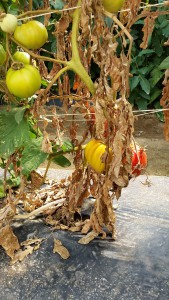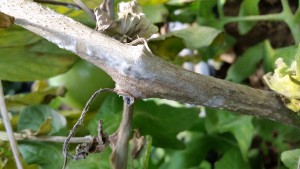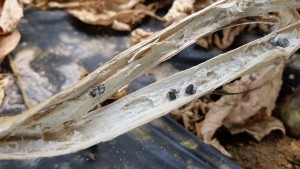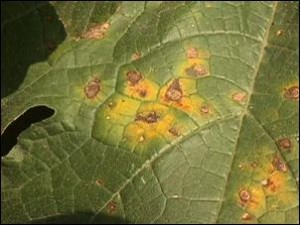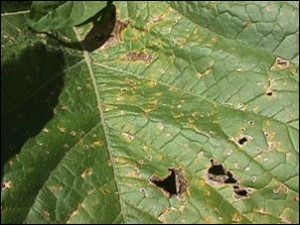The following images consist of important diseases in cucurbit crops. These images can be used as a quick reference for diagnosing important fungal and bacterial pathogens. For best results, please turn your device (i.e., cell phone) sideways. For information on commercial control recommendations, please visit the cucurbit sections of the 2022/2023 Mid-Atlantic Commercial Vegetable Production Guide.
| Cucurbit powdery mildew (CPM) | Cucurbit powdery mildew | CPM on infected pumpkin stem |
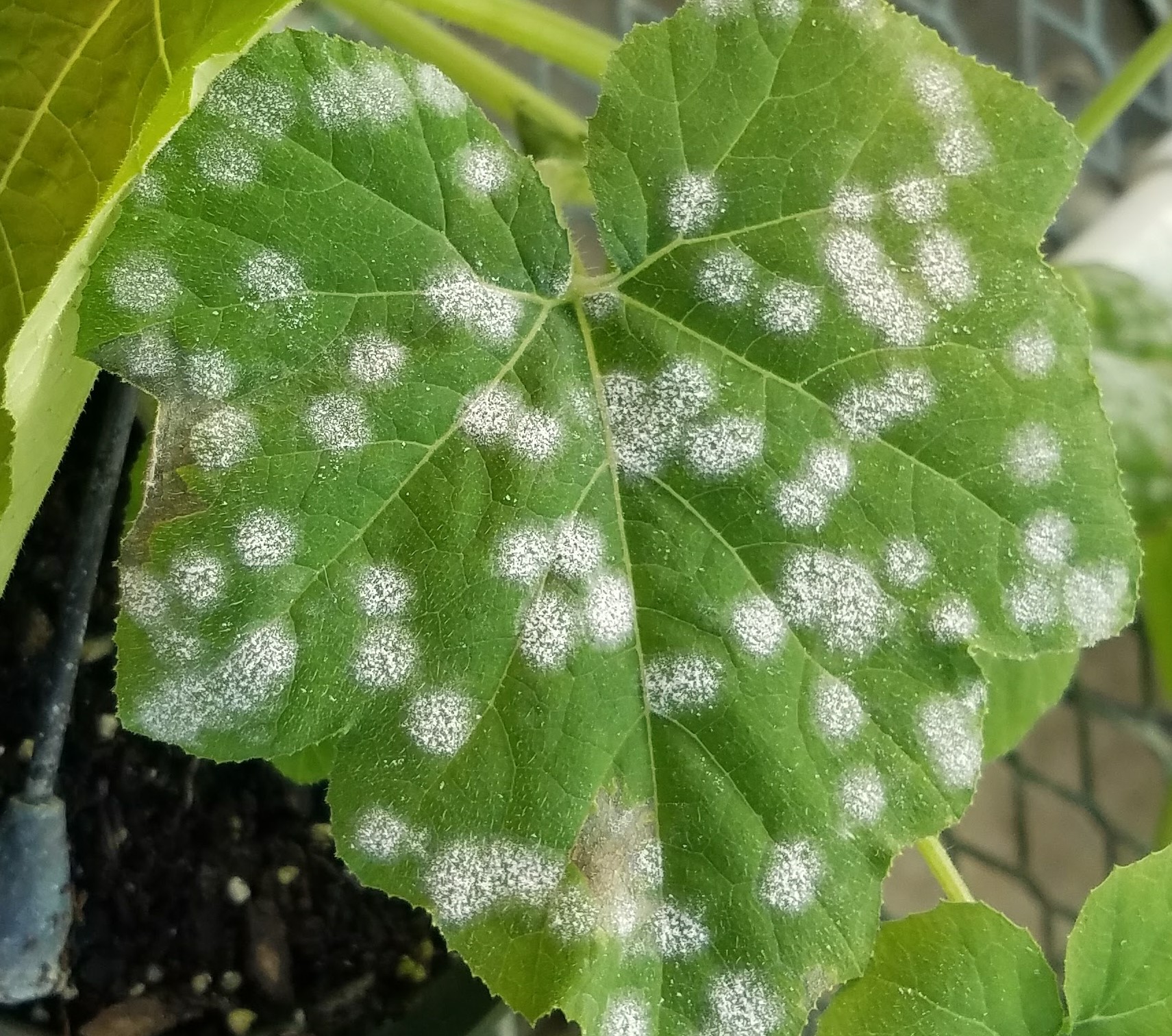 |
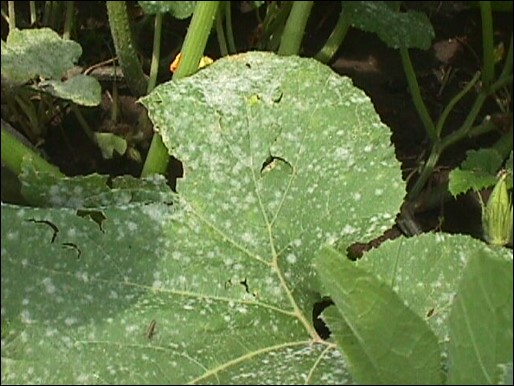 |
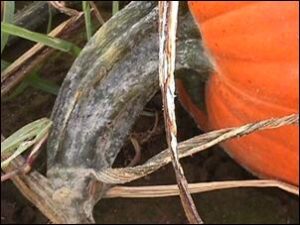 |
| Cucurbit downy mildew (CDM) | CDM sporulating on underside of infected cucumber leaf | CDM sporulating on underside of infected cucumber leaf with 10x hand |
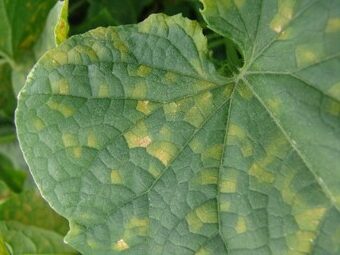 |
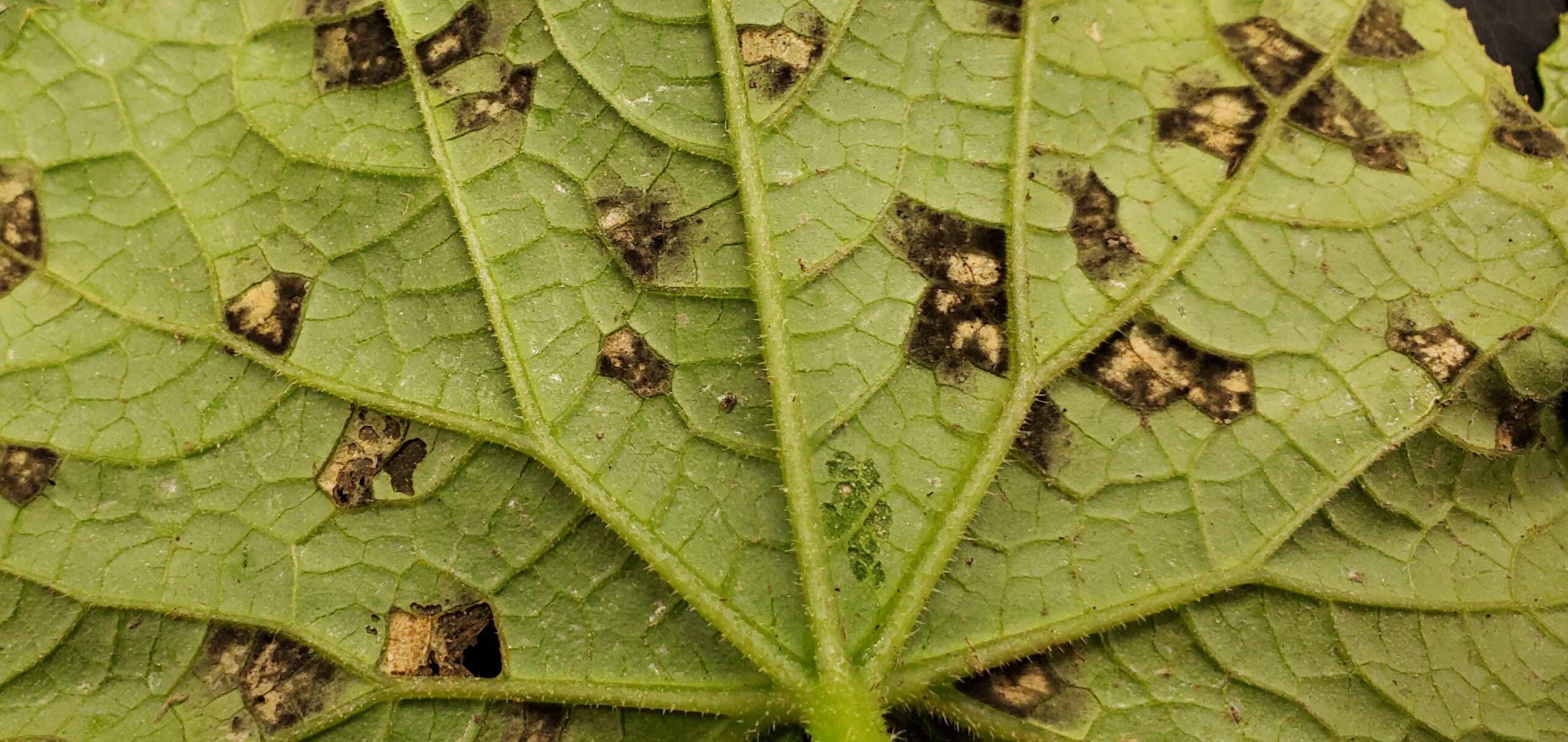 |
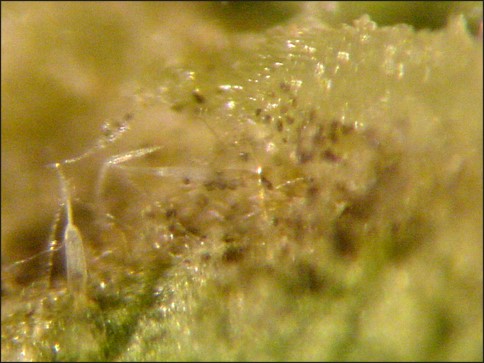 |
| Anthracnose on cucumber | Anthracnose lesion on infected leaf vein | Anthracnose-infected cucumber fruit |
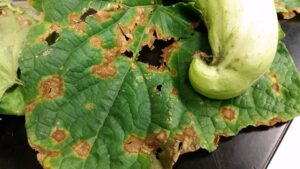 |
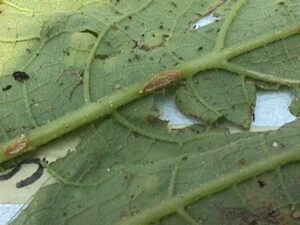 |
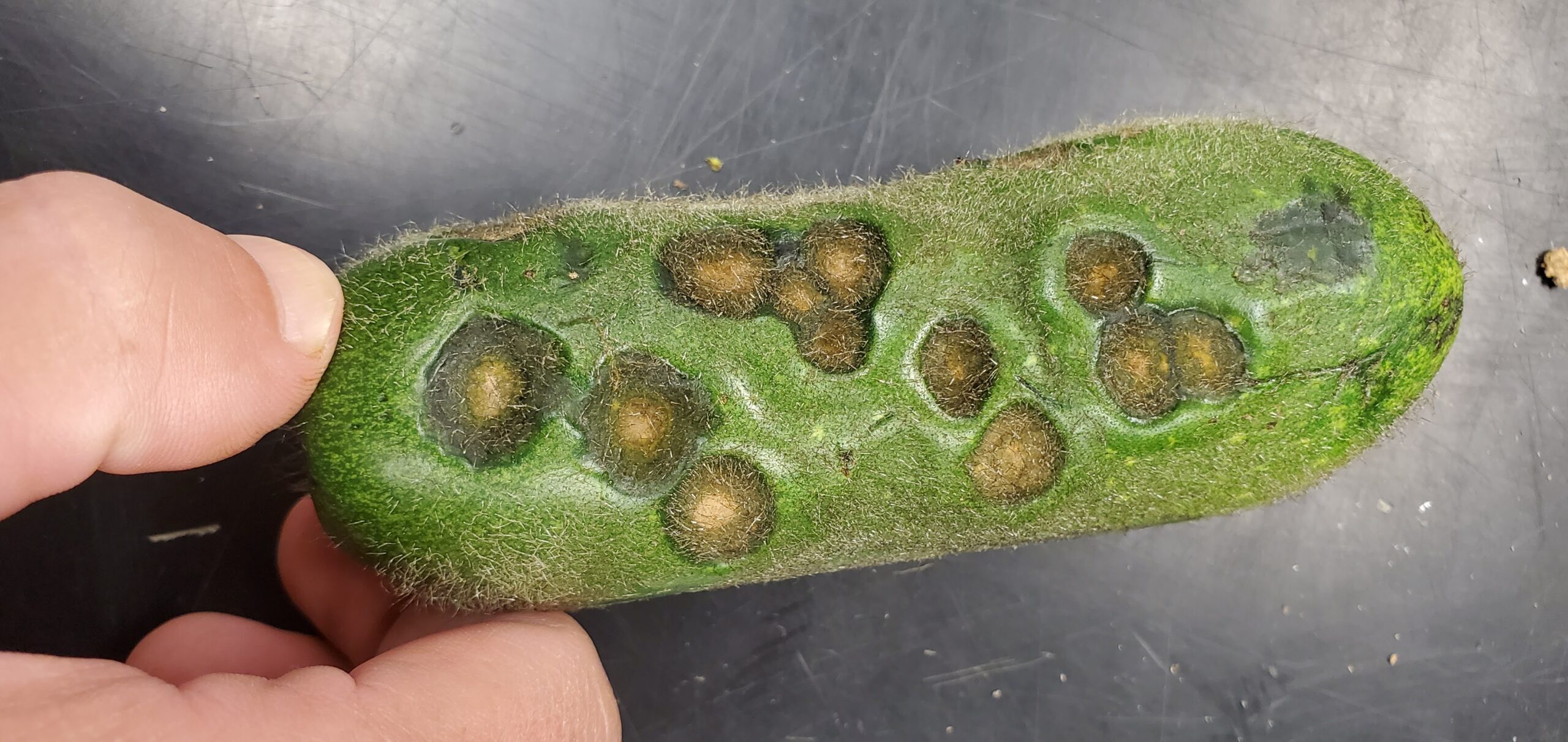 |
| Plectosporium blight on infected stem | Plectosporium lesions on infected vines | Plectosporium lesions on infected pumpkin fruit |
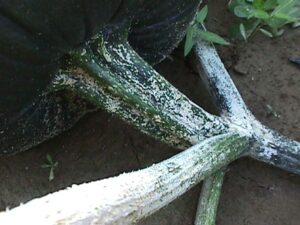 |
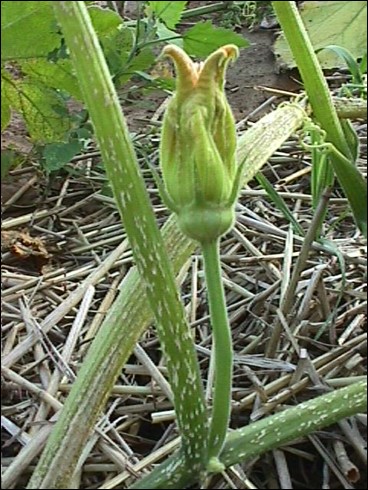 |
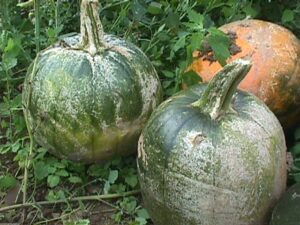 |
| Phytophthora blight symptoms | Phytophthora-infected squash | Phytophthora-infected watermelon field |
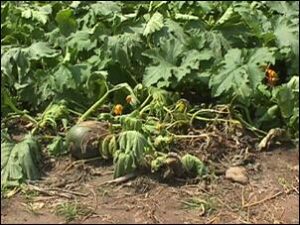 |
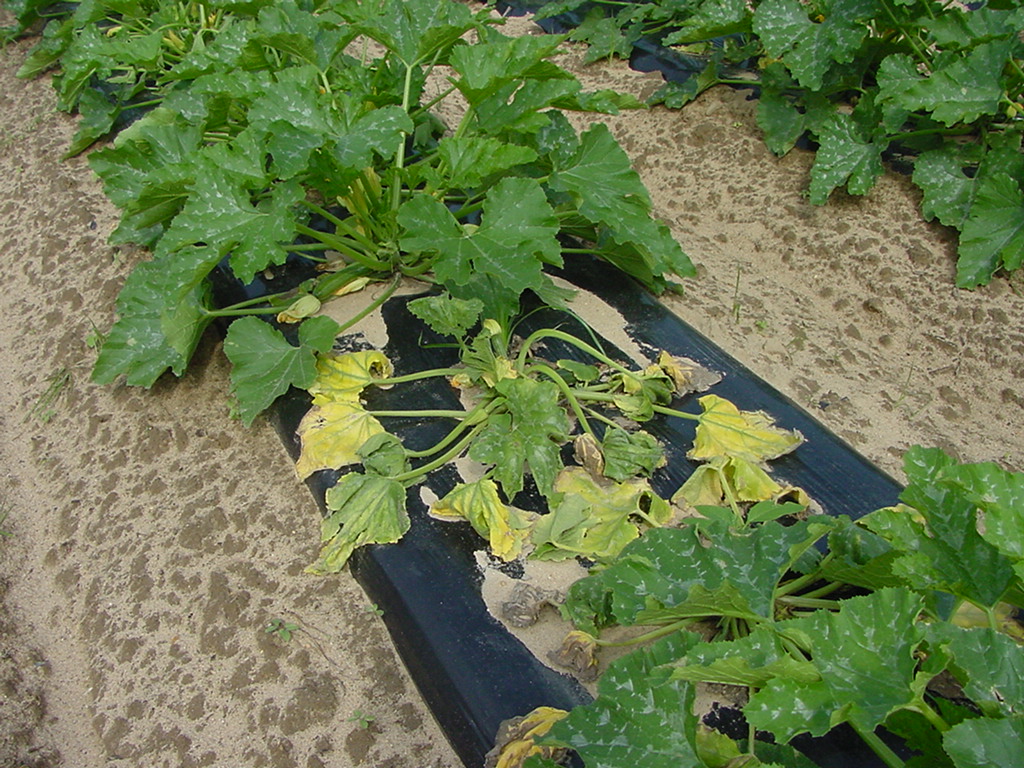 |
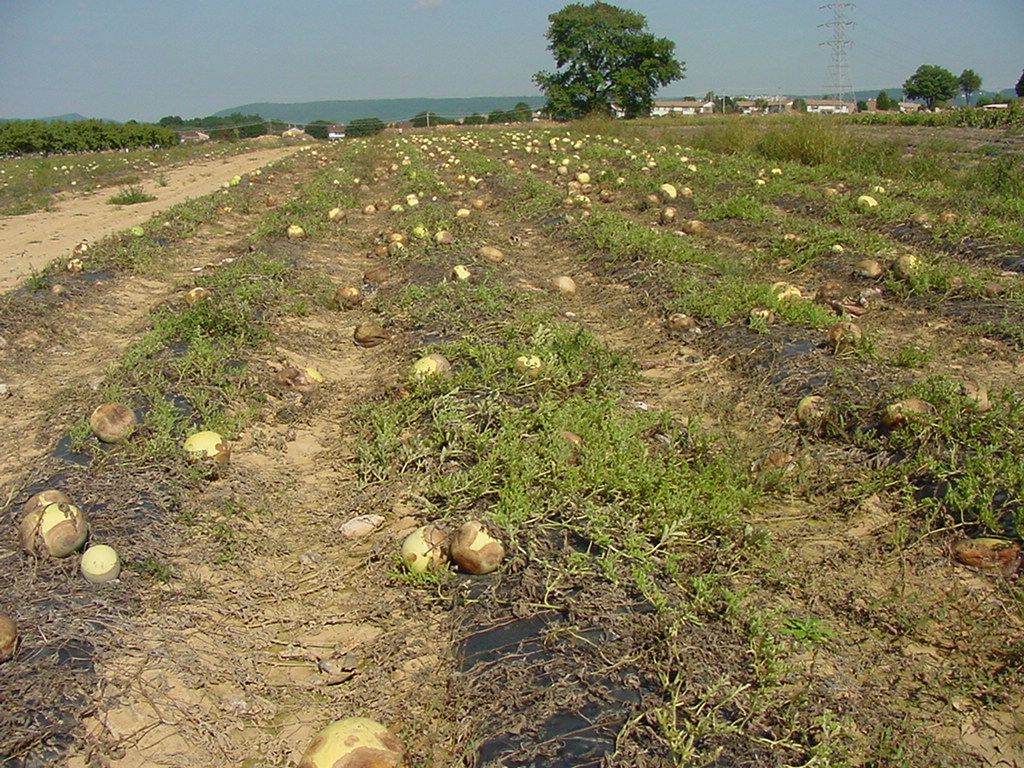 |
| Phytophthora-infected pumpkin | Phytophthora-infected squash fruit | Phytophthora-infected watermelon fruit |
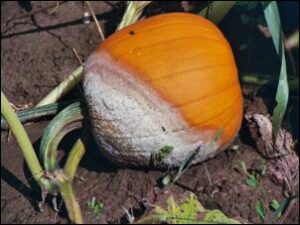 |
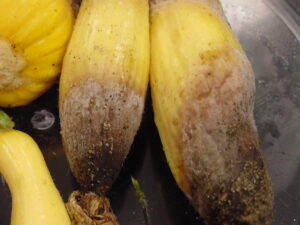 |
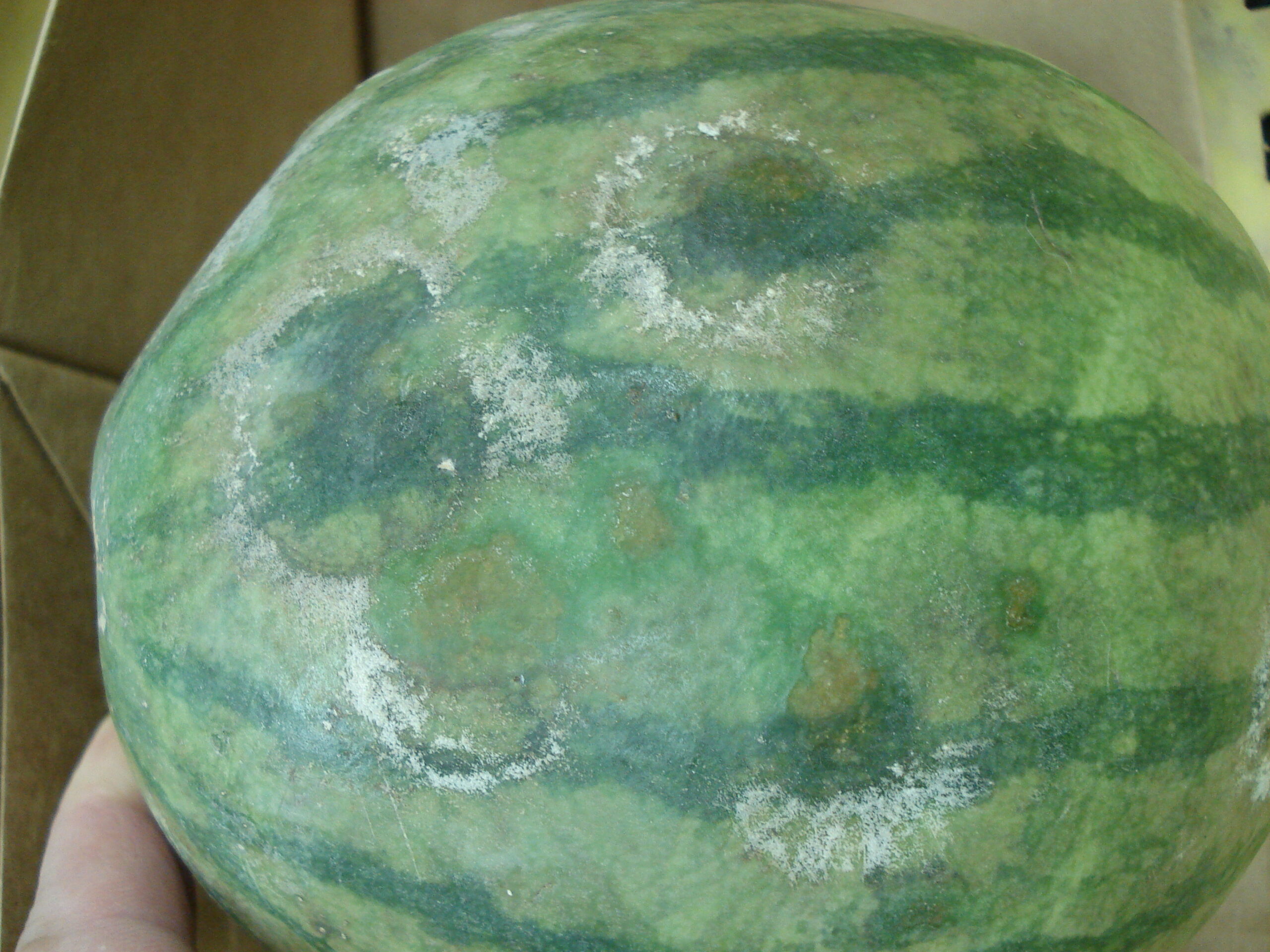 |
| Mosaic virus symptoms on leaves of infected pumpkin plant | Pumpkin fruit infected with mosaic virus | Virus infected squash fruit |
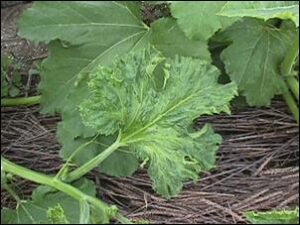 |
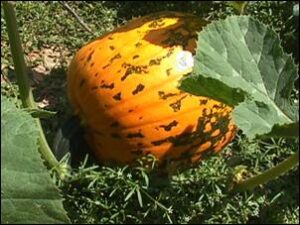 |
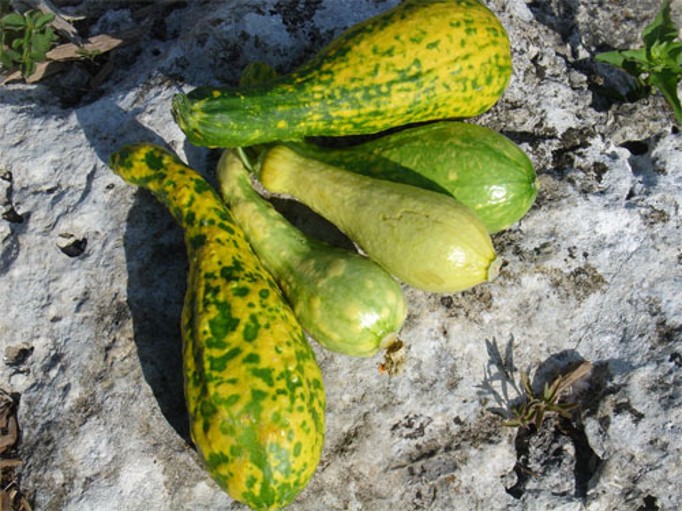 |
| Fusarium fruit rot of pumpkin | White mold on infected fruit | Gummy stem blight |
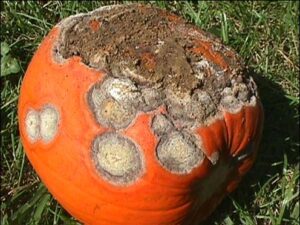 |
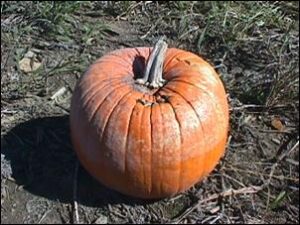 |
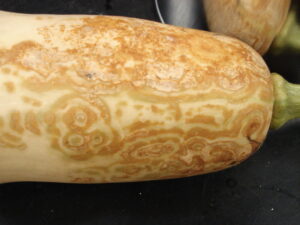 |
| Choanephora-infected fruit | Choanephora spores in infected pumpkin fruit | Choanephora infecting giant pumpkin fruit |
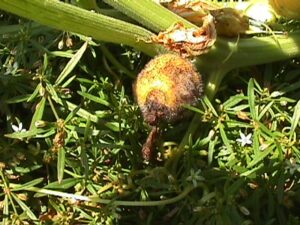 |
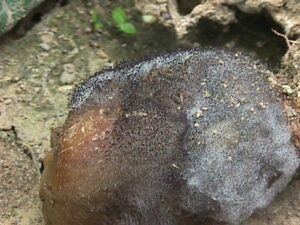 |
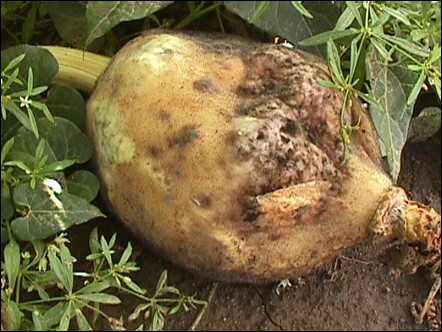 |
| Bacterial wilt infected plant | Symptoms of bacterial canker infected stem | Damage done by cucumber beetle feeding |
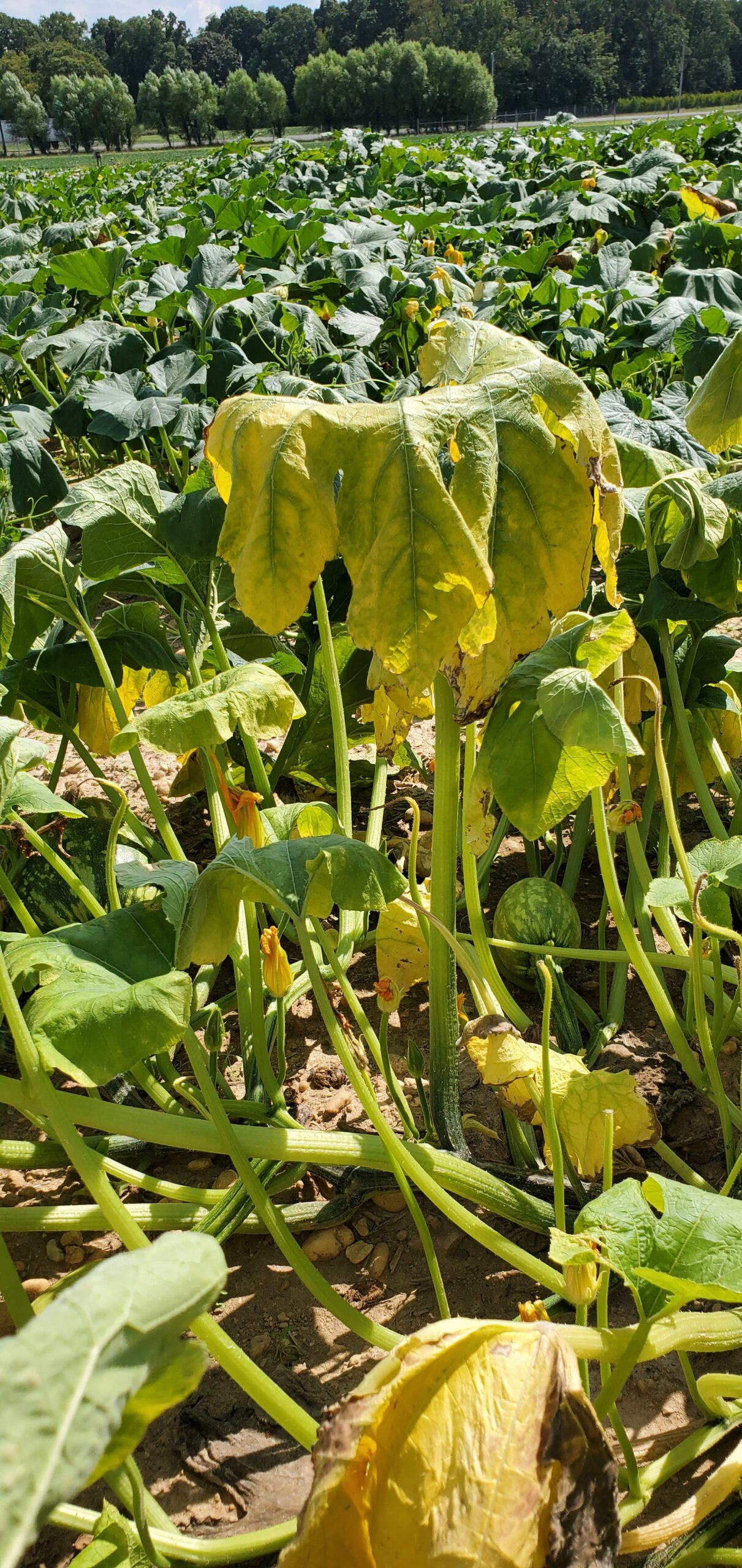 |
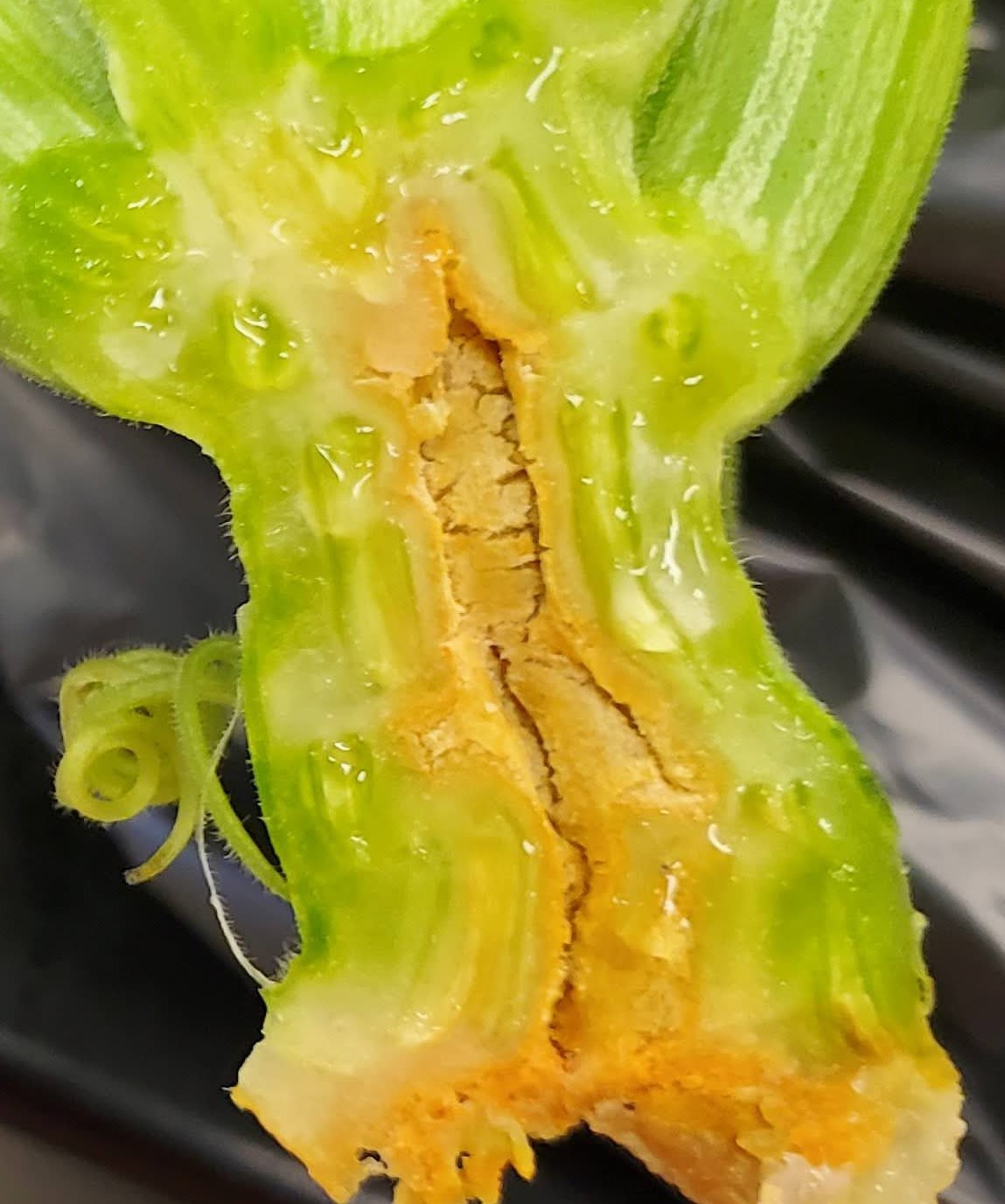 |
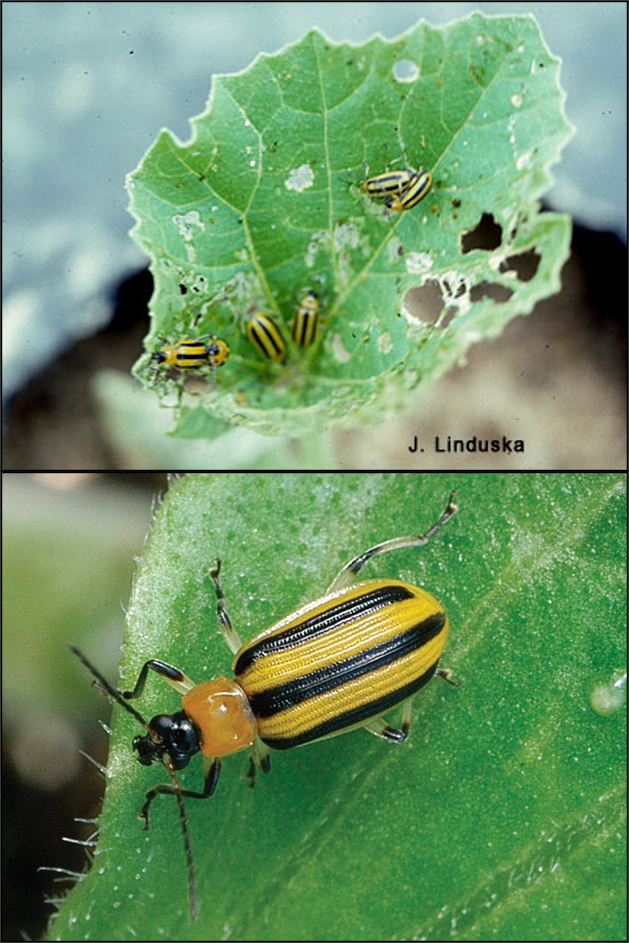 |
| Angular leaf spot | Shot holes in pumpkin leaves caused by Angular leaf spot in pumpkin | Mature pumpkin fruit with sunscald injury due to the loss of plant canopy |
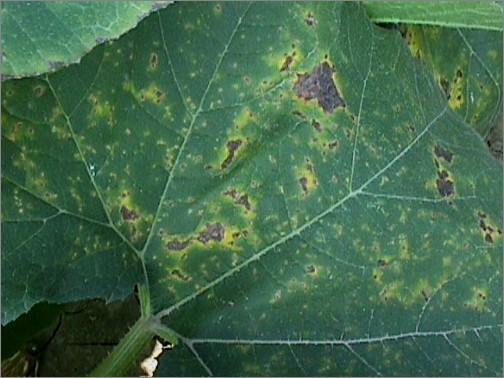 |
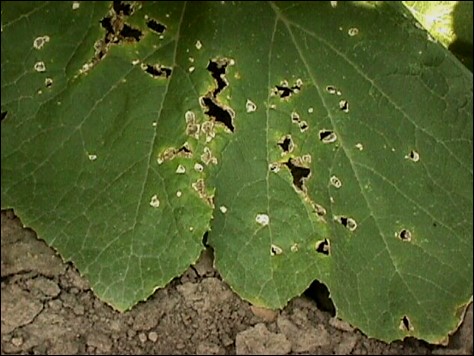 |
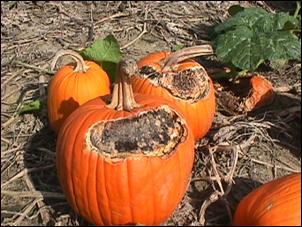 |
Andy Wyenandt and Kris Holmstrom

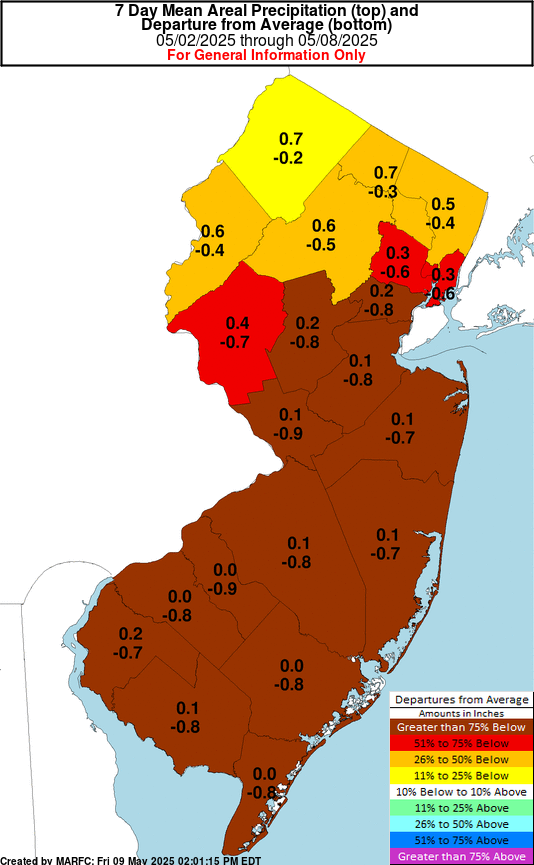 But the following week of low humidity was less than conducive for disease proliferation until the 22nd through the 25th when humidity levels briefly rose and remained in the high 80’s and 90’s for three days, before dropping nicely to the mid 60’s the last two days of June. However, wind speeds of 15 to 25 mph from June 13th to June 19th wicked moisture out of corn and soybeans leaving the crops in a moisture deficit.
But the following week of low humidity was less than conducive for disease proliferation until the 22nd through the 25th when humidity levels briefly rose and remained in the high 80’s and 90’s for three days, before dropping nicely to the mid 60’s the last two days of June. However, wind speeds of 15 to 25 mph from June 13th to June 19th wicked moisture out of corn and soybeans leaving the crops in a moisture deficit.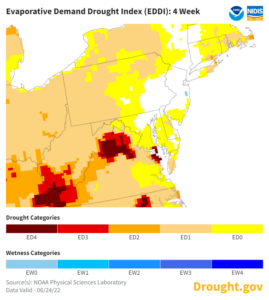 -Jersey. This tool created by the NOAA Physical Science Laboratory is an indicator of both rapidly evolving “flash” droughts and sustained droughts. “EDDI can offer early warning of agricultural drought, hydrologic drought, and fire-weather risk.”
-Jersey. This tool created by the NOAA Physical Science Laboratory is an indicator of both rapidly evolving “flash” droughts and sustained droughts. “EDDI can offer early warning of agricultural drought, hydrologic drought, and fire-weather risk.”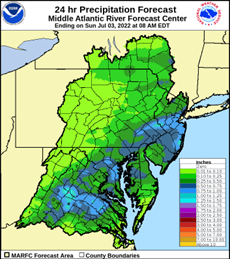 New Jersey anticipates a tenth of an inch to half inch of rainfall for most of Salem County through July 3 and much-needed swath probable for the northern counties where drought conditions the last seven days are 51% to 75% below normal.
New Jersey anticipates a tenth of an inch to half inch of rainfall for most of Salem County through July 3 and much-needed swath probable for the northern counties where drought conditions the last seven days are 51% to 75% below normal.